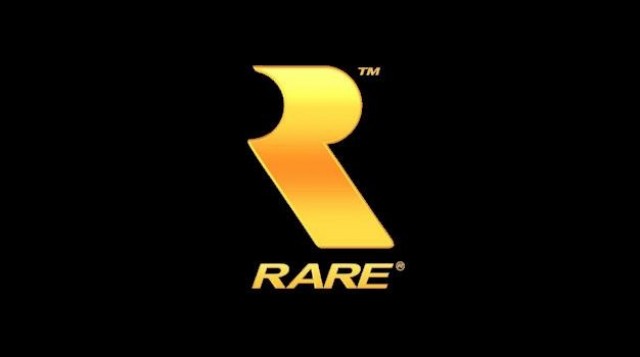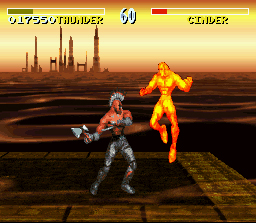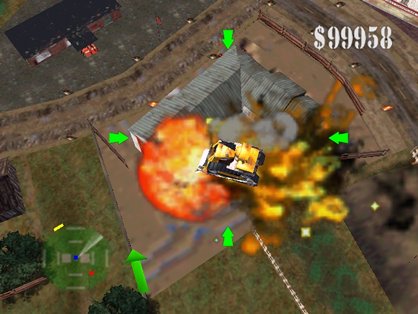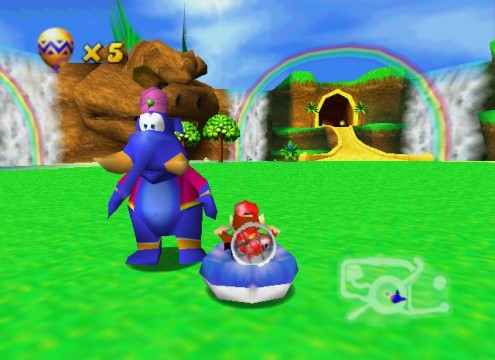
Donkey Kong, before 1994, was known mostly for his arcade games, and hadn’t even been seen for years once Donkey Kong Jr. hit the scene and stole his spotlight. Still, the character was perfect for Rare, as beyond adventures in arithmetic and a brief stint as a go-kart racer, fans didn’t have many preconceptions about his personality, background, friends, life, or anything else. This meant the Stampers and company could throw everything out the window and do what they needed to make Donkey Kong relevant to a modern audience. The grumpy gorilla went from being a vicious abductor to a gregarious banana fiend, chumming it up with his new partner Diddy Kong, his cantankerous grandpa Cranky Kong, and a whole host of other allies and baddies who populated his new world. Now, Rare had to get the basics of the game’s controls and story down.

The story was simple; villainous King K. Rool and his vile Kremlings scamper off with Donkey Kong’s banana hoard, which sends the incensed simian on a quest to retrieve it. For gameplay, Rare turned to the Super Mario series for inspiration, incorporating honed 2D platforming to make their new title as accessible to players as possible. Rare didn’t skimp on the challenge, though, keeping the difficulty moderate so that everyone would have fun with Donkey Kong. Finally, there was one last marching order Rare had to take into consideration for its new game; make it look brilliant. With Sony’s PlayStation treating players to 32-bit graphics, SNES was starting to show its age and Nintendo needed something to keep the digital wolves at bay. Those Silicon Graphics computers wound up being more important than Nintendo ever anticipated, as Rareware used them to develop the first pre-rendered graphics on a home console and make Donkey Kong’s return look like nothing else on the market. Everything was in place, and the Stampers’ Donkey Kong Country finally bowed in 1994. Then, everything changed for Rare again.
Donkey Kong Country became a raging success. Its precision play control and explosive graphics sent players in droves to buy the new title, making Donkey Kong Country the second-highest selling game on SNES of all time, with only Super Mario World, a pack-in title, ahead of it. Nintendo and Rare couldn’t have been happier with the results, and work quickly began on a sequel. Besides Donkey Kong Country, Rare had other projects percolating in the background, including Killer Instinct, a fighting game which became another fan favorite, a baseball game called Ken Griffey, Jr.’s Winning Run, and something tentatively titled Project Dream, about a boy named Edison fighting an evil pirate named Captain Blackeye. Nintendo was pleased that the efforts of Rare had helped breathe new life into SNES, but the writing was on the wall and the company knew making a new system was unavoidable in the face of Sony’s fiercely competitive console. The Stampers found themselves yet again at a crossroads, but being in Nintendo’s camp made the transition a smoother one. With a wealth of experience doing 3D rendering on the Silicon Graphics rigs, Rare would launch headfirst into the Nintendo 64 era with Killer Instinct Gold, and never looked back.

Rare had cemented itself as a premier developer in the industry, but rather than play things safe, the company continued to innovate and experiment, as evidenced by its second N64 title, Blast Corps. The game had players use heavy demolition vehicles and bots to destroy everything in the path of an unstoppable nuclear weapon transporter. The gameplay was hectic and fun, and was very popular with early system adopters. Fans were being kept happy, but behind the scenes things were getting even more interesting. A long-gestating SNES adaptation of the movie Goldeneye had been on Nintendo’s radar, and after finally disentangling itself of the legal troubles keeping the game in limbo, the company turned to Rare to develop it. Rare initially intended to keep Goldeneye 007 an SNES game, with the idea of making it a 2D shooter. However, the developer quickly came to realize that it could do something a lot more ambitious with the Goldeneye license by bringing it over to N64, where it evolved into a more free-roaming, first-person adventure game.
Nintendo liked this new approach, and as with Donkey Kong Country, lent Rare advice during development. The Stamper brothers had seen the success of first-person shooters on PC, but the genre had yet to find a place on home consoles. The team in charge of Goldeneye was tasked with not only finding a suitable first-person control scheme to mimic the accuracy of a mouse and keyboard, but make the game more cinematic and goal-oriented than any other first-person shooter that had come before it. The N64 controller’s analogue stick was the perfect solution for gameplay, and the developers made stealth and satisfying objectives a prominent part of the experience. When Goldeneye dropped in the summer of 1997, Rare had yet another landmark title on its hands and revolutionized first-person shooters on home consoles. The Stampers’ company was truly on a roll, but they weren’t done yet.

Project Dream had also been intended for SNES, but the game grew to be too ambitious for the system and wasn’t going to be able to support the developers’ vision. Like Goldeneye, work quickly shifted to N64, but progress had stuttered down to a lurch. Some of the enthusiasm of the team was waning, as the power of N64 offered new opportunities, but also made them question previous design choices. The Stamper brothers knew that Project Dream was moving along a little slower than anticipated, and looking through the team’s design work they landed upon an idea for how to get it back on the right track; swap Edison with the goofy bear that was going to be a side character.
The team liked the idea, and Project Dream now had the bear as its new lead. Development on the title was picking up speed, but it wasn’t going to be ready in time for the ’97 holiday season. Despite the boom of Goldeneye, Rare still had to bring something to the table for the holidays. Besides Project Dream, Rare had also been hard at work on a racing game called Diddy Kong Racing. Diddy’s first solo-outing was going to be a hybrid racing/adventure game, and since it was close enough to completion it was chosen to take point as the Christmas offering to consumers. There was just one catch; Project Dream‘s lead character had become very popular around the office, and was being included as a racer in Diddy Kong Racing. He’d even been named, too: Banjo. It was too late to swap out Banjo, but at the same time it seemed odd that he’d debut in anything other than his own game. While a little unorthodox, Rare decided it was fine if Banjo’s first appearance was a cameo, and when Diddy Kong Racing released, the world got its first look at the budding star.

Diddy Kong Racing was very well-received and sold a number of copies, continuing Rare’s track record of success and creativity. This was good, as the Stampers were quite busy with Project Dream (which was now being called Banjo-Kazooie) and it would’ve been awkward to have the game’s star tethered to a train wreck. Much had evolved and been changed since the title’s days on SNES. Blackeye was out, and Banjo had a new partner, the titular Kazooie, who was a red bird that lived in the bear’s backpack. Rare was basing the play control of the game off of Nintendo’s Super Mario 64, but didn’t want to seem like they were simply re-skinning the 3D platformer with its own characters. To insure a clear level of distinction, Banjo and Kazooie would team up to perform a variety of unique moves. The duo could shoot eggs, pile drive into the ground, fly, and do a number of other actions to make the gameplay varied and original. There was also a witty narrative being woven into the game that would further separate Banjo-Kazooie from Super Mario 64. Rare was creating something special with the title, and Nintendo was taking notice yet again.




 ShareThis
ShareThis







“Pundits who had criticized the Stampers’ sale of Ultimate Play the Game were suddenly eating crow as Rare was now primed to take advantage of Nintendo’s windfall.”